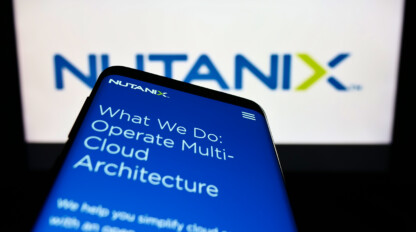Talk, Talk, Talk & Cloud Migration

Journey to the Cloud
I have been working with enterprises in the design and architecture of core infrastructure for nearly fifteen years now and I’ve never seen a time when clients are more interested in sitting down to simply “chat through options”. I am by no means complaining or saying it is a bad thing, and as you will see in this era of data center and cloud migration- my best advice is to accept this world we live in, need to design to and will deploy into.
Three years ago a client would ask for a meeting to discuss something like a data center upgrade. In reality, the path was well established. We would start with the business drivers and timelines and move into the inventory of the existing systems and applications. Next, we’d create a plan of which applications would be upgraded along the way, and then decide if we wanted to go with blades or rack mount. Talk about 1/10 GB networking, WAN acceleration and then decide how they wanted to have the VMware clusters setup, did they have licenses for their backups and if they were ready to take on VMware Site Replication Manager (SRM) to provide disaster recovery. In all candor, the biggest unknown that may come up was if they were going to pick Dell, HP or Cisco UCS for the server platform and if now was the time to tackle database sprawl.
Now let’s imagine that same client today looking at a data center upgrade. Do we stay traditional (aka “legacy” – How does that name feel? – Do you really want to be known as deploying “legacy” infrastructure? Try and sell that one on your LinkedIn profile. 🙂 ) What about converged, or better yet, hyper-converged?
Now that we have that straight, the question is how many workloads will go into the cloud? You noticed I did not say “if” but “how many”. For many of the CIOs I work with, it was only a short time ago they were convinced they would stay on prem and now they’re asking (and being asked by folks like their CFO and CEO) to “Explain to me why this workload cannot go into the cloud.”

In a cloud bound world, the options of which path for cloud migration to choose become very relevant. The Gartner Magic Quadrant proves that Amazon Web Services (AWS) has a significant lead so this should be an easy decision right? Well what about those Microsoft Azure EA credits I got for “free” with my last Microsoft Enterprise Agreement (EA)? I can’t let them go to waste right?
At ivision, we have taken the approach of focusing on the two leaders in this space, AWS and Azure.
- Do I look at traditional Infrastructure as a Service (IaaS) or the approach that brings a better return Platform as a Service (PaaS) but takes longer to transition to?
- What applications, teams or projects make the most sense to tackle first?
It’s at this point in the journey, our AppDev team perks up and gets excited. With good reason, I might add, as this is where real cost savings and scale come in (more about this later).
How do I make sure I have not just made it super simple for someone to come in through my cloud door?
Once we pick a provider (AWS or Azure), it’s important to talk through security. My own personal experience with both providers has shown their overwhelming desire to make these technologies easy to deploy and adopt. But rest assured security is not only possible, but also potentially better than anything you have deployed in your data center to date. However, we’ve found it rare to come across a client who understands how to apply this security model properly, and deployed out of the gate- there are big security concerns.
…With a security model in mind, I now have to think about integration.
- Do I simply create a site-site-vpn connection from my site?
- Do I go with a dedicated connection like Direct Connect (AWS) or ExpressRoute (Azure)?
- As I am going to need to have traditional (legacy) data center services, do I use my existing data center?
- Would it be better to leverage a data center that already has high speed connectivity in Azure, AWS and others just a cross-connect away like Equinix?
- Then can I blend my services between legacy and cloud based services seamlessly as one infrastructure?
- What about backups and disaster recovery?
- Should I leverage backup services provided through the cloud providers like Azure Backup?
…What about extending my traditional backup services into the cloud?
- If I do this where should my data be located? An Azure backup vault, Amazon S3 vaulting to glacier?
- If I take a snapshot of my instance is that sufficient?
- Should I take my on-prem backups and push them up to the cloud?
- Maybe I don’t want to keep all my eggs in one basket and use my legacy infrastructure or another provider to off load backups and disaster recovery to?
Disaster recovery also opens up other options around cloud specific options like Microsoft Azure Site Recovery (ASR) and 3rd party options like Zerto.
All of these questions lead us to the question that most likely pushed your CFO into talking to you about cloud migration to begin with, cost. Will this cost less? If it costs more is that justified? Each provider has their own way to work the system to get the best price, but this really depends on understanding not only their offerings but your workloads at a very detailed level in order to make the best decision. If you make the wrong decision here do you want to be the one explaining to your CFO why your run rate just keeps going up and how you will need a significant capital expenditure to pull everything back in house?
These are just some of the questions my team faces each and every day working with our clients around their path to the cloud. It is not surprising that the desire to “talk through” options has become a large part of what we do every day. I think we are unique in that we want to take the time upfront in order to make sure our clients understand all of these options and how switching out one or two can significantly change all of the others (in terms of cost, security and workload performance). It is understandable the role of a CIO or Architect in an enterprise has become significantly more challenging. Never before has the number of options available been so great, while the internal “push” be so strong to adopt cloud technologies. At the same time, once a decision is made and you are down the path toward integration, it is not something which is easily undone and the success of your decisions will be evident to all of your enterprise and clients to see.
With all of this said, these are exciting times. If you are looking for a “jump start” down this path consider coming to the cloud seminar we have on June 29th. There will be some big name clients talking about their experiences in moving to the cloud and how each took a different path.



